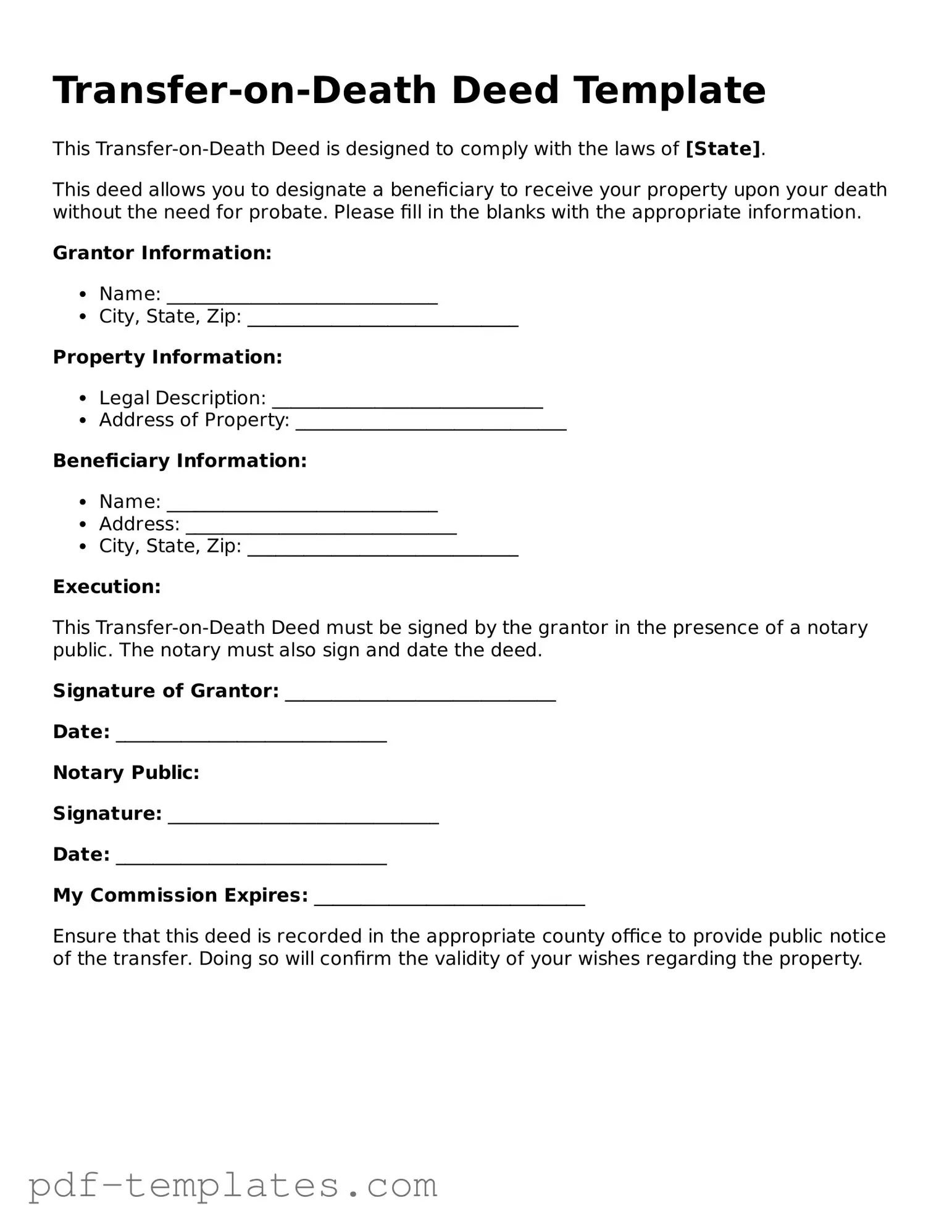Transfer-on-Death Deed Document
A Transfer-on-Death Deed is a legal document that allows an individual to transfer real estate assets to a beneficiary upon their death, without the need for probate. This straightforward process can simplify the transfer of property, ensuring that your wishes are honored and your loved ones receive what you intended. To get started on filling out the form, click the button below.
Customize Form Now
